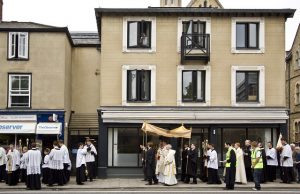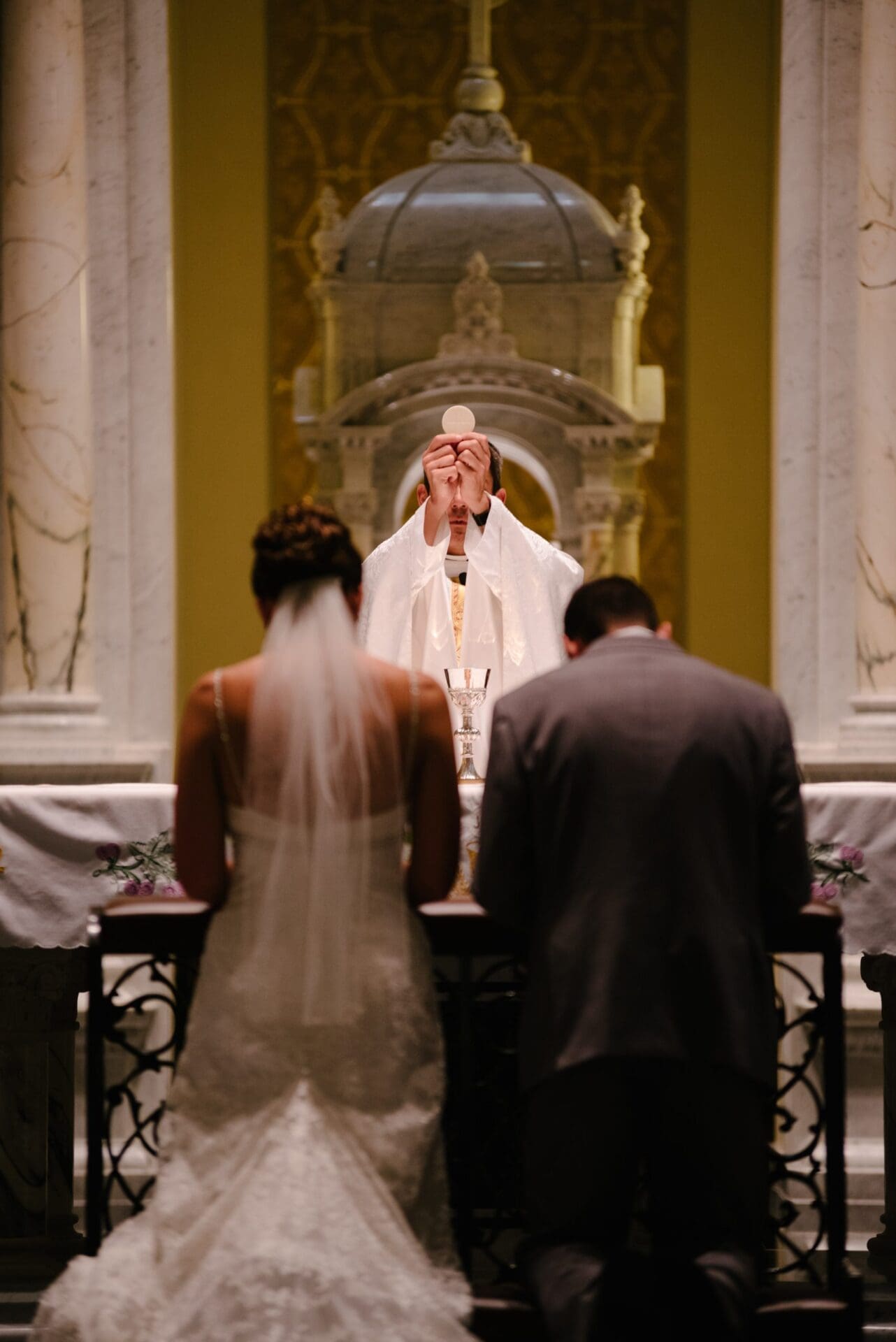Holy Communion and Worship of the Eucharist Outside Mass was one of the first of the Church’s ritual books published after the Second Vatican Council, promulgated by the Congregation for Divine Worship on June 21, 1973, which happened to be the Solemnity of Corpus Christi that year. The text contains a number of Eucharistic rituals, including the “Rite of Distributing Holy Communion Outside Mass with the Celebration of the Word” and “Administration of Communion and Viaticum to the Sick by an Extraordinary Minister.”
The book’s third chapter, “Forms of Worship of the Holy Eucharist,” includes three sections: “Exposition of the Holy Eucharist,” “Eucharistic Congresses,” and “Eucharistic Processions.” This chapter on forms of Eucharistic worship, as with the first two and the text generally, contains not only a brief theological treatment of the topic (lex credendi), but also the rubrics and texts used for celebrating (lex orandi).
As Holy Communion and Worship of the Eucharist Outside Mass explains, “When the Eucharist is carried through the streets in a solemn procession with singing, the Christian people give public witness of faith and devotion toward the sacrament” (101).
“The annual procession on the feast of Corpus Christi, or on an appropriate day near this feast, has a special importance and meaning for the pastoral life of the parish or city. It is therefore desirable to continue this procession…when today’s circumstances permit and when it can truly be a sign of common faith and adoration” (102).
“It is fitting,” the text says, “that a Eucharistic procession begin after the Mass in which the host to be carried in the procession has been consecrated” (103).
Concerning the procession’s specifics, the rite encourages “stations where the Eucharistic blessing is given…. Songs and prayers should be so directed that all proclaim their faith in Christ and direct their attention to the Lord alone” (104).
The priest himself vests in a white cope, while “lights, incense, and the canopy under which the priest carrying the Blessed Sacrament walks should be used in accordance with local customs. It is fitting that the procession should go from one church to another. Nevertheless, if local circumstances require, the procession may return to the same church where it began. At the end of the procession, Benediction with the Blessed Sacrament should be given in the church where the procession ends…. Then the Blessed Sacrament is reposed” (105-8).
—Answered by Christopher Carstens, Editor, Adoremus Bulletin


